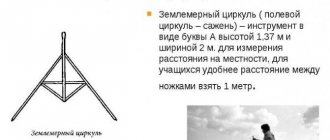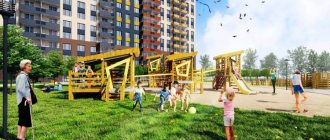What are the standards?
For employees of organizations and enterprises, the employer is obliged to create comfortable working conditions (Article 157 of the Labor Code) that comply with sanitary standards for office premises and industrial enterprises. The latter are different, but they are regulated by one SanPiN 2.2.4.548-96 “Hygienic standards for microclimate in production.” There are also a number of existing SanPiNs for offices that set out requirements for:
- basic parameters of the room;
- temperature conditions;
- microclimate;
- illumination level;
- noise indicators;
- rules for arranging and using office equipment and furniture.
How to prevent violations?
Since failure to comply with sanitary and epidemiological standards threatens not only fines, but also a possible suspension of the production process, the first thing the manager needs to do is to familiarize himself with all the necessary requirements and organize the work process in such a way that these violations do not occur:
- calculate footage;
- take into account the location of the enterprise or office relative to other organizations and residential premises;
- if necessary, install air conditioning and heating.
In addition , it is recommended to place these standards on a special stand in order to avoid disputes with both employees and employees of inspection organizations.
What regulations apply to the office?
Requirements for space and organization of work space in the office
SanPiN determines the standard area for 1 person in an office - the minimum number of meters per employee.
For production, requirements are established for changing areas: the area of dressing rooms per 1 employee must be a strictly defined amount. This does not apply to offices, because during work, clothes and hands are not exposed to contamination, there is no showering, no special clothing is used - a hanger in the office is enough to change clothes.
What else to consider when working at a computer in the office
Modern electronics have a negative impact on vision and create physical discomfort associated with a sitting position. In this regard, the legislation, in addition to the norm of square meters per person, establishes rules for organizing the workplace. To maintain long-term concentration and tone, it is recommended to follow additional parameters for the placement of office equipment.
The recommended area for one workstation with a computer should be at least 4.5–6 m², but, for example, when performing creative work with significant concentration and mental stress, the workstations should be isolated from each other by partitions 1.5–2 m high. There are also requirements for placing equipment on the desktop. The minimum desktop area when working with a computer according to SanPiN is considered optimal, corresponding to the following parameters with a non-adjustable height of 725 mm:
- width - from 800 to 1400 mm;
- depth - 800 and 1000 mm.
Sanitary standards do not regulate the required area of a computer monitor, but set the remote control for screen illumination, brightness, glare, gloss and other parameters harmful to vision. The table shows additional standards and requirements for the workplace in office premises, which should be taken into account when organizing the space.
| Keyboard position requirement | 0.1–0.3 m from the edge of the table |
| Spacing between office desks | At least 2 m |
| Required distance between monitor edges (sides) | Not less than 1.2 m |
| Requirement for chair back tilt, angle | About 30° |
| Table surface height requirement | Not less than 0.6 m |
IMPORTANT!
SanPiN regulates not only the standards for arranging furniture in the office, but also the frequency of rest breaks during work - every 2 hours.
Standards for temperature, light, humidity, noise level in the office
The normal temperature for an eight-hour working day is in the range of 20–28 degrees:
- in summer - 23–25°C;
- in winter - 22–24°C.
If there are deviations from the requirements:
- in summer at 29 degrees the working day is reduced to 6 hours, at 32.5 - to 1 hour;
- in winter at 19 degrees the duration of stay at the workplace is 6 hours, at 13 - 1.
Offices require control and regulation of air humidity. The main way is to use:
- humidifiers and dehumidifiers (steam and ultrasonic);
- exhaust fans and hoods;
- convectors and thermal radiators.
The illumination in the room is controlled by a lux meter. During the daytime, a high level of natural light is recommended - this is a good alternative or addition to artificial light. When choosing lighting fixtures for an office, they rely on the following main indicators:
- Colorful temperature;
- ripple factor;
- power consumption.
The noise level is measured with a sound level meter. Noise is affected by the sound insulation of windows and the serviceability of equipment.
IMPORTANT!
Based on the sanitary and epidemiological situation, the regions independently determine additional measures that must be observed in offices that affect the microclimate and its parameters: the introduction of physical distance of 1.5–2 meters, the use of social separation measures, mask and disinfection regime (clause 4.1. SanPiN 3.1.3597-20). For example, in Moscow they are listed in decrees No. 55-UM dated 05/07/2020, No. 12-UM dated 03/05/2020.
ConsultantPlus experts analyzed the established standards for space per workstation equipped with a PC. Use these instructions for free.
When can the area be smaller?
The area can be reduced only in one case – when the employee’s working day lasts less than four hours. It is also possible to set up a hot desk: these are desks that are not assigned to a specific subordinate.
What happens if an entrepreneur does not comply with the rules?
If a manager tries to save at the expense of employees when renting or purchasing an office, then he will face:
- Negative attitude of employees;
- Conflicts;
- Low motivation of subordinates;
- Decline in team performance;
- Fines and penalties during certification.
What happens if you don’t adhere to established standards?
In case of violations of sanitary requirements, including during the operation of offices, liability arises in accordance with Art. 6.3. Administrative Code:
- for officials - a fine from 500 to 1000 rubles;
- for those carrying out entrepreneurial activities without forming a legal entity - a fine from 50 to 1000 or administrative suspension of activities for up to 90 days;
- for legal entities - a fine of 10,000 to 20,000 rubles or administrative suspension of activities for up to 90 days.
Where to go if professional rights are violated?
Depending on the situation, location, and the severity of certain violations, the employee may contact any of the following authorities at his own discretion.
Federal Labor Safety Inspectorate
If an employee’s rights are violated and the workplace is equipped incorrectly and does not comply with SanPin standards, he has the right to contact the Federal Labor Inspectorate in accordance with Article 352 of the Labor Code of the Russian Federation.
It is necessary to write an appeal, statement or complaint, attaching supporting documents, photos and video materials, if any. If a violation is confirmed, the department will draw up an order to eliminate the violations or send information to the executive authorities to take measures to eliminate them.
Local union
Almost every large organization has its own trade unions, to which an employee can file a complaint against the employer in case of violations. The only condition is membership in this organization.
The trade union must consider the complaint and respond within a week . If the violations recorded in the document have not been eliminated, the complaint is transferred to higher executive authorities for further proceedings.
Court
An extreme measure, which is recommended to be resorted to in case of serious violations and ignoring of your complaints by the employer.
Labor disputes can be considered by the court in accordance with Art. 391 of the Labor Code of the Russian Federation at the request of one of the parties. This form involves not only a request to eliminate violations in the workplace, but also the recovery of moral or material damage, if any.
Rospotrebnadzor
If it is impossible to contact the above organizations, the employee has the right to contact Rospotrebnadzor with a request to conduct an inspection of the employer’s compliance with sanitary and epidemiological standards.
Another important requirement for office space is its fire safety. Read more about the legal norms and rules for team behavior in the event of a fire here.
It is useful to know your rights and the procedure to follow if they are violated, but do not get excited: you can try to resolve the issue peacefully and not go into conflict. Talk to the management, perhaps the authorities will listen to your complaints and meet them halfway.
It is easier for a manager to eliminate a violation than to receive an administrative fine, remember this. Only if your requests are ignored and outright neglect, complain to higher authorities.
Normative base
Resolution of the Chief State Sanitary Doctor of the Russian Federation No. 81 dated June 21, 2016 “On approval of SanPiN 2.2.4.3359-16 “Sanitary and epidemiological requirements for physical factors in the workplace” (together with “SanPiN 2.2.4.3359-16. Sanitary and epidemiological rules and standards ...)"
SanPiN 2.2.4.548-96. 2.2.4. Physical factors of the production environment. Hygienic requirements for the microclimate of industrial premises. Sanitary rules and regulations (approved by Resolution of the State Committee for Sanitary and Epidemiological Supervision of the Russian Federation No. 21 dated October 1, 1996)
Mixed type of accommodation
Suitable for: companies of any type.
It is quite difficult to say about the specific pros and cons of this type of accommodation. First of all, the entrepreneur must clearly understand that this type is the golden mean between classic and American. Therefore, conclusions about the advantages and disadvantages of the issue should be made based on the characteristics available in the two previous descriptions.
Psychological side of the issue
It is important in the matter of placement to be guided not only by the need for rational organization of the work space and financial and economic investments. It is worth paying special attention to the opinion of psychologists on this matter. In matters of the formation and placement of certain departments, it is necessary to proceed from the fact that they are all divided into loud and quiet. Loud departments have a constant need for communication and movement. These types of departments include marketers, advertisers, the press service, etc. Quiet departments in their activities mainly work with documents and remote means of communication (computer, fax, telephone). Of course, there should be no problems when arranging these departments in a classical system, but with open space everything needs to be carefully thought through and weighed. Among other things, psychologists consider it important to pay attention to the temperament and character of work colleagues, but in practice this is quite difficult to do.
Accounting standard for residential area in the Moscow region
The accounting norm in the Moscow region, depending on the territory, is set at 7.5 to 15 square meters. m.
The dimensions of the accounting standard for the area of residential premises, established by decisions of the legislative bodies of local government of the Moscow region (using the example of some municipalities of the Moscow Region):
- City district of Balashikha Moscow region - no more than 9 square meters. m. of total area per family member (Decision of the Council of Deputies of the Balashikha City District of the Moscow Region dated September 30, 2015 N 16/10);
- Bogorodsky urban district MO - 8 sq. m of total living space (Decision of the Council of Deputies of the Bogorodsky City District of the Moscow Region dated December 25, 2018 N 129/10);
- Urban district of Bronnitsy MO – 10 sq. m of total area per person (Decision of the Council of Deputies of the city district of Bronnitsy MO dated 02/25/2021 N 100/33);
- Urban district of Vlasikha MO - no more than 8.0 square meters. m of total living space per family member (Decision of the Council of Deputies of the Vlasikha Municipal District of 10.02.2010 N 14/2);
- Volokolamsk district of Moscow region - no more than 9 square meters. m. of total area per person (Decision of the Council of Deputies of the Volokolamsk District of the Moscow Region dated December 19, 2005 N 282-38 (as amended on April 6, 2006);
- Urban settlement Volokolamsk, Volokolamsk municipal district, Moscow region - no more than 9 square meters. m of total area per person (Decision of the Council of Deputies of the urban settlement of Volokolamsk, Volokolamsk municipal district of the Moscow Region dated January 31, 2018 N 159/37);
- City district Voskresensk MO - 9 sq. m. of total living space per person (Decision of the Council of Deputies of the Voskresensk City District of Moscow Region dated December 20, 2019 N 72/8);
- Urban district Voskhod MO - 12 sq. m. of total living space for each family member (Decision of the Council of Deputies of the Voskhod City District of Moscow Region dated April 24, 2017 N 3/20);
- Urban settlement Nekrasovsky, Dmitrov municipal district, Moscow region - 10 sq. m. of total area - for those living in separate apartments; - 15 sq. m. of total area - for those living in communal apartments (Decision of the Council of Deputies of the urban settlement of Nekrasovsky, Dmitrov municipal district of the Moscow Region dated 08/11/2016 N 119/37);
- Dolgoprudny municipal district - no more than 9 square meters. m. (Decision of the Council of Deputies of the city of Dolgoprudny MO dated April 25, 2005 N 24-nr (as amended on March 16, 2006);
- City district Klin MO - 10 sq. m. of total area per family member living in a separate apartment, and 9 sq. m. m of living space per family member living in a communal apartment (Decision of the Council of Deputies of the Klin Moscow City District of February 25, 2021 N 9/81).
- City district Losino-Petrovsky MO - 7.5 sq. m. of total area per share of each resident (Decision of the Council of Deputies of the Losino-Petrovsky Moscow Municipal District of December 25, 2006 N 66/11 (as amended on April 20, 2016);
- Urban settlement Lotoshino, Lotoshino municipal district, Moscow region - 15 sq. m. of total living space for each family member (Decision of the Council of Deputies of the urban settlement of Lotoshino, Lotoshinsky municipal district of the Moscow Region dated October 24, 2008 N 160/25 (as amended on December 26, 2008).
Japanese system
Lately, the oriental style has become more and more fashionable, but the Japanese system does not at all force all employees to be seated according to Feng Shui, the point here is completely different: scientists in Japan have developed a method of organizing the workspace, better known as the 5S method, to improve work efficiency. Its main goal is to create optimal conditions for performing operations, maintaining order, cleanliness, accuracy, saving time and energy. The method is based on five steps, named after the first letters of five Japanese words, which translated mean “sorting”, “self-organization” (ordering), “systematic cleaning”, “standardization”, “improvement” (improvement).
The most important thing that an employer should always remember is that the funds invested in the competent organization of the workspace will pay off doubly, affecting the work efficiency and working capacity of the team, so you should not save on the future prosperity of your company.
Who can be provided with housing under a social tenancy agreement?
In Part 2 of Art. 49 of the Housing Code of the Russian Federation provides that low-income citizens recognized on the grounds established by the Housing Code of the Russian Federation as needing residential premises provided under social tenancy agreements are provided with residential premises of the municipal housing stock in the manner established by the Housing Code of the Russian Federation.
Thus, social rental housing is provided to citizens who are in need of residential premises (Article 51 of the Housing Code of the Russian Federation), but not to everyone, but only to those who are recognized as low-income.










